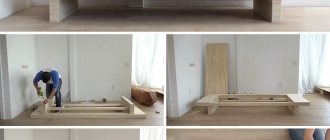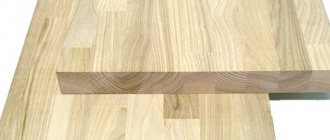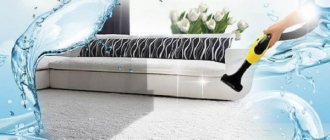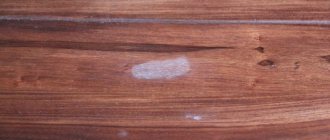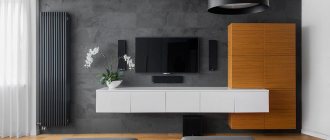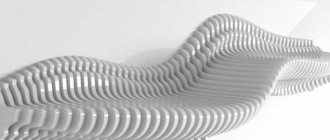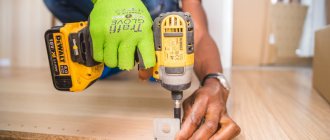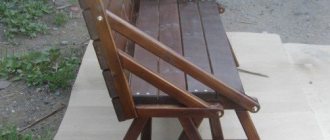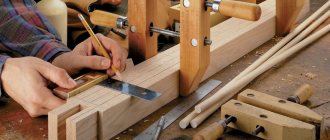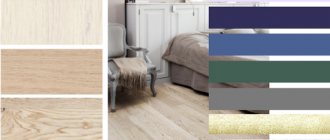Nuances of choosing models
No apartment is complete without upholstered furniture. The stores offer a large selection of sofas and armchairs, but homemade options allow you to create a special atmosphere and comfort. A novice master will be able to make a number of interior items with his own hands, including:
- Frameless upholstered furniture - sewn from various materials, stuffed with holofiber, polystyrene foam or polyurethane foam. There are various models of such furniture: small sofas, bean bags, loungers.
- With a rigid structure - these are sofas, armchairs, beds with a frame made of metal or wood.
Upholstered furniture in loft, hi-tech, and minimalist styles has simple rectangular designs without excessive decor. It is with these forms that it is better for a master working at home to start.
Frameless
On a frame basis
The final stage is decoration
Large bed with soft headboard and soft upholstery, made by yourself
Decorating is one of the best options to give the atmosphere uniqueness, elegance, and update the interior. If you have the desire and imagination, you can easily do this work yourself, without the help of designers.
Beautiful covers and pillows to decorate a soft corner
Nowadays, the decoupage technique is widely used - using thin napkins, you apply various patterns and designs to the surface of furniture.
Replacing the filling and fabric for a chic antique chair
If the upholstery is outdated or has become unusable, you can sew new covers and make decorative pillows. It is necessary to choose the fabric for upholstery carefully - it should not fade or smell strongly, and the pile should not fall off. In fact, there is nothing difficult in choosing. To make the furniture look impressive, partner fabrics of a single color are chosen for upholstery. They are used to upholster the armrests and bottom lines; for other parts, fabric with a picture or a different color is used. To reduce fabric consumption, choose a material that is plain or has a small pattern.
An example of decorating upholstered furniture using covers
Filling plays an important role in decorating upholstered furniture. If it has lost its elasticity and sagged, it must be replaced so that the furniture is not only beautiful, but also comfortable. Inexpensive materials include foam rubber, batting and padding polyester. The last option is the most common; using it as a filler, you will decorate the furniture in a short time. A high-quality padding polyester should be of the same thickness, fairly dense and odorless. Foam rubber is no less popular; it must have a fine-porous structure. If, when pressed, it is instantly restored, then such a filler will last quite a long time.
Replacing filler during furniture restoration
If the upholstery on your favorite sofa has become worn out or stains have appeared on it that cannot be gotten rid of, but you feel sorry for throwing it away, since the furniture is still quite strong and can last for many more years, then you can reupholster it by buying another fabric. If this work is difficult for you, but you sew well, then why not make new covers yourself, you can add drapery elements. If they get dirty, they can simply be removed and washed.
Beautiful headboard for a bed with your own hands
When choosing a material, take into account the general environment, interior style and, of course, your taste. It is better if you use fabrics of soft colors and sublime shades for decoration. The fittings must match the color of the material. By decorating furniture with your own hands, you will give it a second life, and the decor in the house will be original and unique.
Restoration and renovation of a comfortable and familiar soft chair
Review of materials
Everything is simple with materials for frameless furniture. Any thick fabric is suitable for its manufacture. Making frame upholstered furniture requires a more careful approach. It consists of parts, each of which requires different materials for manufacturing:
- frame - the material must be durable and environmentally friendly;
- base - it is required to be reliable and able to withstand heavy loads;
- filler - necessary for softness of furniture;
- upholstery – gives a complete aesthetic look.
Before choosing a material, you should carefully read the characteristics of each. Advantages and disadvantages, as well as cost, are the main indicators for making the right choice.
Fillers, sheet and upholstery materials are used to make upholstered furniture. The types of sheet materials for frames, as well as their advantages and disadvantages, are presented in the table.
| Material | Advantages | Flaws |
| Chipboard - a board made of pressed shavings and sawdust | High strength, affordability | Deteriorates when exposed to moisture |
| Fiberboard - fibreboard | Excellent insulating properties, ease of processing and installation, relatively low cost | Swells when exposed to moisture |
| LDSP - a panel made of pressed wood, covered with a special film | Environmental resistance, ease of processing, visual appeal, low cost | Moisture permeability, low resistance to mechanical loads |
| OSB – oriented strand board | Resistance to external influences, minimal presence of harmful chemicals | Disadvantages depend on the brand and manufacturer. Some boards contain harmful phenols and formaldehydes. They are suitable for outdoor use only |
| Plywood - boards obtained by gluing sheets of wood | Affordable, environmentally friendly material | High price, low strength |
| Solid wood (solid wood) | Natural, durable, environmentally friendly material | High price |
When considering what modern upholstered furniture is made from, it is worth paying attention to the filler:
- Foam rubber is polyurethane foam. It is used more often than other materials as a soft filler. Good furniture foam rubber is highly durable and elastic. The best brands are ST 2536 and HR 3535.
- Sintepon is a canvas that contains synthetic fiber. The fibers are bonded using emulsion or thermal methods. In furniture production, the densest padding polyester is used - 150 g/m2. The material is resistant to moisture. He is not afraid of temperature changes. Restores shape well. The synthetic winterizer is laid on top of the foam rubber. This allows for increased slip and prevents the formation of wrinkles.
- Batting is a knitted fabric with a rare weave, filled with technical wool. Used as a flooring material that increases the softness of furniture.
- Felt is an expensive natural material made from sheep wool by felting. In the manufacture of furniture, felt is used to impart rigidity, strength, and durability.
One type of filler for upholstered furniture is not enough. Foam rubber will require additions. What to choose depends on the purpose of the specific product and the requirements for it.
When making upholstered furniture with your own hands, special attention should be paid to upholstery materials. The table shows the most used fabrics.
The main stages of making cabinet furniture with your own hands, tips
| Material | Advantages | Flaws |
| Flock | Has an attractive appearance. Resistant to mechanical damage, animal hair does not stick to it, the material does not fade, and is easy to clean | It wears off over time and traps odors. |
| Faux suede | The material is durable and wear-resistant | Subject to deformation |
| Leatherette | Easy to care for, does not absorb moisture, does not wipe off, looks attractive | Subject to mechanical stress - scratches quickly appear on it |
| Jacquard | Soft durable fabric for upholstery. Durable and wear-resistant | Does not tolerate moisture |
| Chenille | Does not fade for a long time, does not absorb odors, does not deform | Absorbs moisture. A pet's claws will significantly shorten its life. |
| Tapestry | It is distinguished by a variety of colors and high strength. Moisture resistant | Fades in the sun, wipes off quickly |
| Gozhka | Durable, wear-resistant plain fabric. Features a wide range of colors. Keeps its shape well, does not wrinkle, does not shrink | Does not withstand mechanical stress and high loads |
When choosing upholstery material for making upholstered furniture with your own hands, you should focus on the purpose of the items. Leatherette is more suitable for upholstering country furniture. It is better to put suede, matting or tapestry on upholstered furniture for a nursery. In the living room, where the owners invite guests, the interior will be decorated with a beautiful sofa upholstered in flock, chenille or furniture velor.
The benefits of making it yourself
Beautiful and comfortable upholstered furniture with your own hands
Making furniture at home is a fascinating and, most importantly, exciting process. If you had the desire and imagination, not only a sofa, but also other interesting and unusual upholstered furniture would appear in the house.
Making upholstered furniture with your own hands has many positive aspects or, in other words, advantages:
- You will bring the most unusual design ideas to life.
- This work is entertaining and allows you to gain skills in this interesting business.
- Allows you to save your family budget. Furniture you make yourself will cost significantly less if you bought it in a store.
- The finished design will be of high quality, since you choose the material and components yourself.
- You will create an original item that will fully match the interior.
- The size will fit a specific place in the room.
- In case of wear or other defects, you can easily replace the upholstery material.
- Upon completion of the work, you will feel inner satisfaction from what you have done.
- Original furniture will become your pride. You will make upholstered furniture not only for family and friends, who knows, maybe in the future you will open your own business.
Required Tools
The technology for manufacturing upholstered furniture requires the presence of certain tools:
- drill - this basic tool needed to create holes;
- a screwdriver is necessary for installing furniture fittings, screwing in and unscrewing screws;
- jigsaw – you can’t do without it when cutting and creating various cutouts;
- a grinding machine is needed to clean the surface and level the cut line;
- a tape measure is necessary to take measurements;
- a metal meter ruler is needed to mark the surface;
- caliper - a universal tool for determining thickness and depth;
- a steel square will help align the corners;
- the level will clarify the accuracy of the position of the planes in the vertical and horizontal position;
- a simple pencil - marking lines are drawn with it.
Types of furniture staplers, their features and scope of application
Almost all of these tools are in the arsenal of a home craftsman. Furniture production at home does not need more, this will be enough.
Sales of furniture
You can sell ready-made upholstered furniture in different ways:
- in large shopping centers;
- in the manufacturer’s network showrooms;
- in non-chain stores;
- in specialized furniture stores;
- through the Internet.
Another product sales channel is direct sales of furniture. Distribution of product catalogs and personal meetings with potential buyers are an important part of the work of successful companies that focus on corporate orders.
There are alternative methods for promoting an upholstered furniture production company. This includes installing exhibition stands in public places and promoting products via the Internet. The latter method gives the entrepreneur many opportunities to sell finished products.
The upholstered furniture market includes products in the mid-price range, as well as exclusive products. Exquisite premium furniture does not exceed 13%, and 60% of the market consists of mid-priced items. Domestic buyers prefer the production of custom-made upholstered furniture. All these features must be taken into account when drawing up a financial plan and when implementing a business idea.
Rate this page: 11 ratings, average: 4.64
- #: Business for men
- Furniture and interior
- Production
Design and calculations
To understand how to make a sofa yourself, you should first design it on paper. This will help you examine the model in detail and work out the details. Then you need to try it on for the room. To do this, you will need the basic parameters: length and width.
Having decided on the dimensions, proceed to the drawing. It is best to use graph paper. For these purposes, the sheets will have to be glued together. You can make a sketch to scale, but if the master is making furniture for the first time, then it is better to make full-size drawings. All the details are applied to them, their exact location is determined, and fastenings are thought out. Only after completely marking everything on a sheet of drawing paper do they begin cutting.
To create a drawing, special programs are used, for example, AutoCAD. But if a person has never encountered such applications, then it will take him time to familiarize himself. In this case, it is better to use a pencil and paper. An accurate drawing will help determine the material consumption. To do this, the main parts are measured, their areas are calculated and summed up.
The drawing will help determine the required number of screws and furniture fittings, as well as the consumption of upholstery material. This quantity is calculated similarly to frame slabs. When calculating the size of the upholstery, do not forget about allowances.
Stages of self-production
When the drawing is ready, it's time to start manufacturing. It all starts with the frame - the basis of any upholstered furniture. Next, install the base. After this, proceed to the filler. The work ends with the upholstery.
Creating the frame and parts
To make a frame, its base is marked and cut out. This is done in accordance with the drawing using a jigsaw. If the structure is large, then the base is divided into parts that are processed separately. The frame base is a rectangular fragment. If it is made from separate parts, then they all must be carefully adjusted.
Next, vertical posts and horizontal partitions are cut. They are collected in a box. For reliability, notches are cut out at the base of the parts to form couplings - tenon grooves. Then the parts are sanded and covered with stain. It will help protect the frame from negative external influences. The dried frame elements are additionally connected with metal corners.
Installing the base
A base, which is a rectangular sheet, is placed on the prepared box. It is glued to the frame with wood glue or screwed with self-tapping screws. The fasteners should be recessed into the thickness of the material, making special holes for self-tapping screws. This will help avoid tissue damage in the future.
The presence of wooden slats is a necessary condition in the production of orthopedic furniture. These are elastic strips that are fixed to the frame instead of a rigid base. This design helps distribute the load during sleep. The planks are made from steamed wood. They are attached to the frame using metal brackets. Possible fastening with rubber or plastic rivets. With slats you can assemble a more comfortable and high-quality sofa.
How to properly arrange furniture in a room, designer tips
Creating an Inner Layer
The optimal seat thickness is 100 mm. It is made from two types of foam rubber - 40 mm and 20 mm. You will need 2 cuts 40 mm thick and one 20 mm thick. The foam rubber is cut out in accordance with the base drawing. One layer is placed on top of the other and glued. At home, Titanium polystyrene foam glue is used. To save money, the middle layer can be laid out with scraps. But there should be a whole foam rubber on the base and at the top.
For greater comfort, the sofa is made multi-layered. The main layer remains foam rubber. For softness, a top layer of padding polyester is added before upholstery. This material also performs an aesthetic function. It helps to round corners and gives the desired shape. To prevent the seat from collapsing under load, layers of foam rubber are padded with felt.
Fabric covering
The sofa is reupholstered with fabric in the following order:
- The upholstery parts are cut out in accordance with the drawing. Before cutting, their contours are applied to the fabric using soap or tailor's chalk. Along the perimeter of the part, add 5 cm per hem.
- The upholstery parts are placed on the parts of the sofa intended for them, straightened out and secured with a stapler. During operation, the fabric stretches well. Loose upholstery will quickly become unusable.
- Particular attention is paid to corners. To prevent them from rounding, the fabric is carefully placed inside. If possible, it is better to stitch the corners. This will help maintain its shape for a long time.
The main thing in upholstering a sofa is care and good tension. If the question arises of how to update a sofa, then new upholstery parts are cut out from the old panels. Sofa covers are sewn using the same principle.
Features of manufacturing furniture with a transformation mechanism
The transformation mechanism allows you to fold out the sofa, increasing the sleeping area. Currently, there are several varieties of it:
- book - the back of the sofa leans back;
- tango - a modified book with a back that is fixed in an intermediate position;
- Eurobook - the sofa seat rolls forward on casters, the backrest lowers into the freed space;
- pantograph - the seat simply moves forward using special handles;
- French folding bed - the sleeping place consists of three sections that stack on top of each other; it is enough to pull one part forward to unfold the entire sofa;
- Italian folding bed - unfolds in two stages: first, the back of the sofa tilts forward and rests on the seat of the sofa, then the entire structure turns around its axis and unfolds.
The easiest ones to make yourself are a Eurobook, a pantograph and a French folding bed. In the first option, it is enough to equip the sofa seat with rollers. In the second, make a seat from three parts, attaching metal legs to the back.
It is better for a novice master to try his hand at simple models; with experience, you can move on to products with a transformation mechanism. For the first job, it is better to choose cheaper materials. Not everything may work out right away; a rework or complete replacement of the damaged part will be required.
